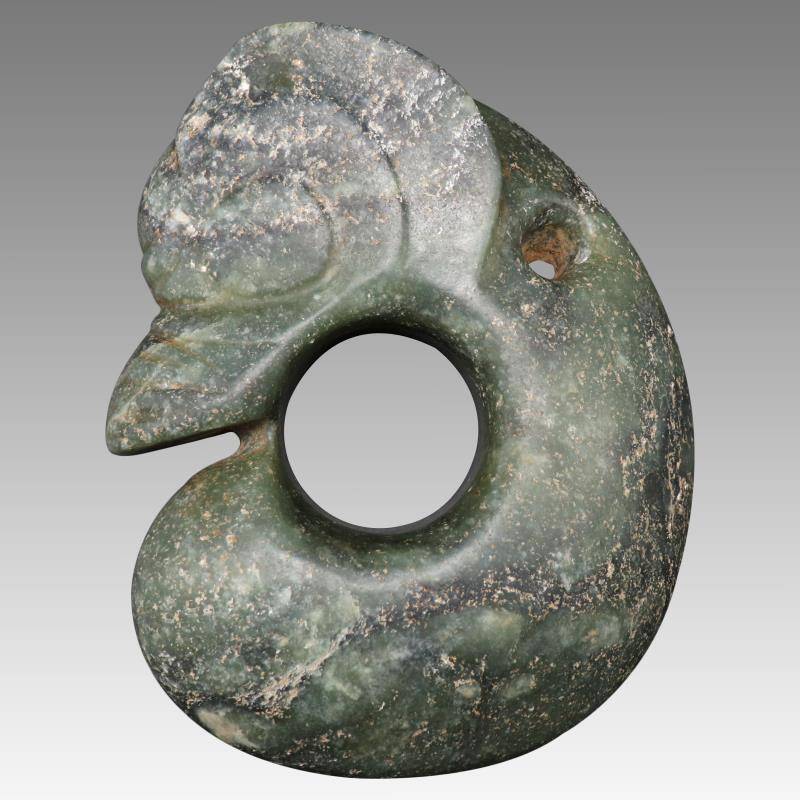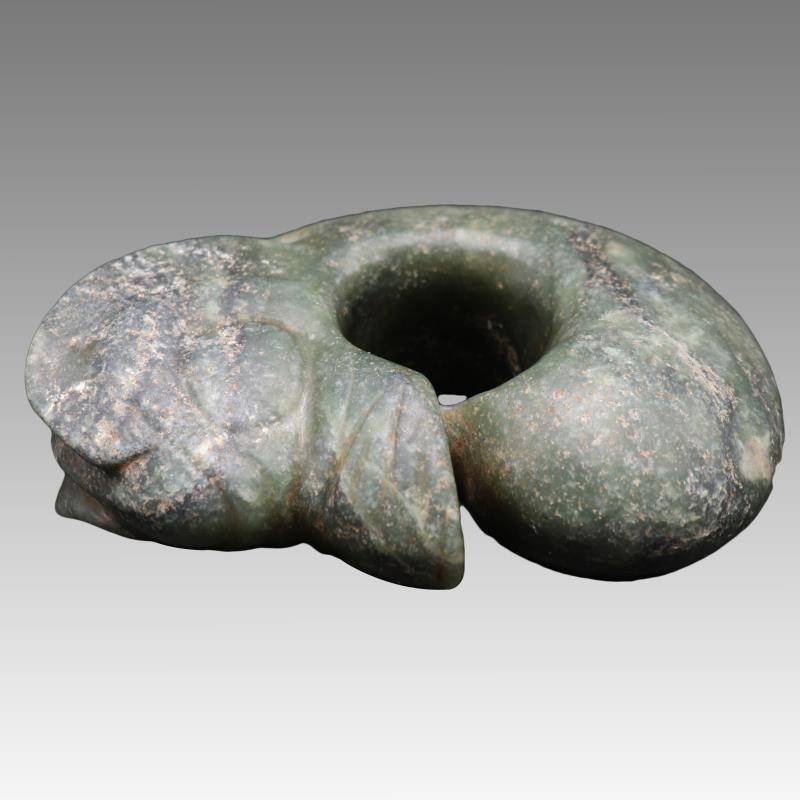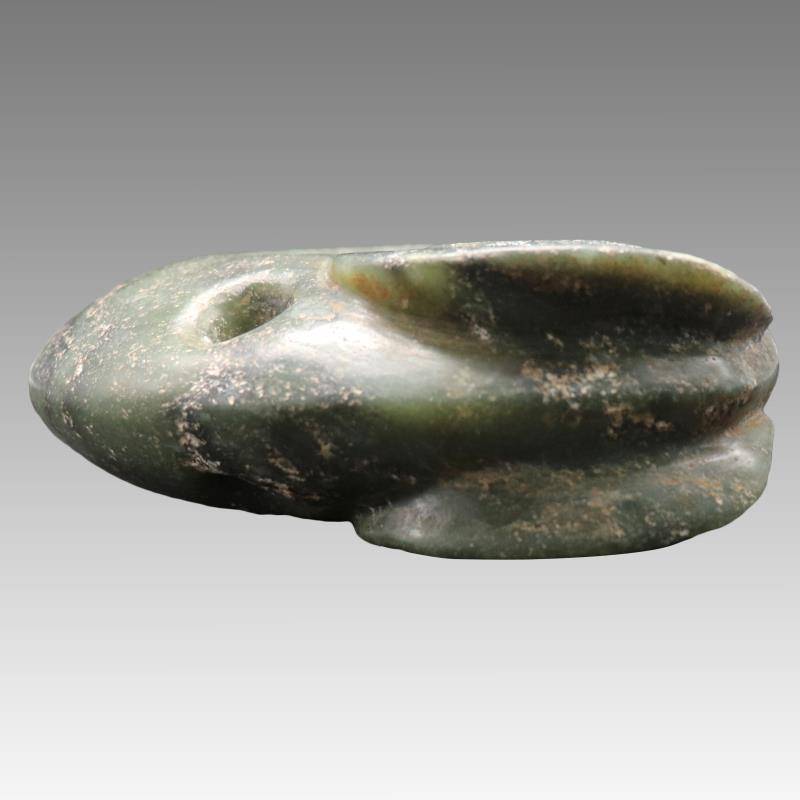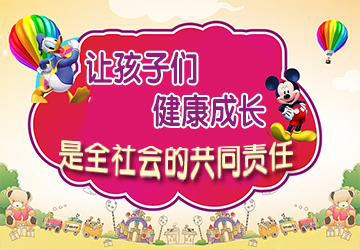
玉猪龙是红山文化玉器的代表作,我国古代对发现于红山等地的一种玉器的称呼,又名玉兽玦。被认为是龙的最早雏形。但由于外形特殊,考古界对于该玉器定义为猪还是龙争议颇多,还有人认为这是熊。其用途尚不明确,多认为是宗教礼器。

红山文化是距今五六千年间,活动于燕山以北,西辽河、大凌河流域和渤海湾北岸的一支部族集团所创造的古文化。它的遗存最早发现于1921年。因遗址最早在内蒙古赤峰红山后被发现,1954年命名为红山文化。红山玉器是红山文化最为突出的标志和重要组成部分,代表着新石器时代晚期中国北方地区高超的制玉水平。据统计,出土的红山玉器中,常见的有玉猪龙、玉箍形器(或称马蹄形器)、勾云形玉佩、玉璧、玉玦、玉镯、玉丫形器、玉匕形器、玉人,以及玉枭、玉龟、玉蝉、玉凤等各种动物形玉器。其中,玉猪龙又是红山玉器中最具代表性的玉器,是目前所知年代最早的龙形器物之一。

Yuzhulong is a representative work of Hongshan cultural jade. In ancient China, it was a name for a kind of jade found in Hongshan and other places, also known as jade beast Jue. It is believed to be the earliest prototype of a dragon. However, due to its special shape, archaeologists have a lot of arguments about whether the jade is a pig or a dragon, and some people think it's a bear. Its use is not clear, most of them are religious ritual.

Hongshan culture is an ancient culture created by a group of tribes in the north of Yanshan, the West Liao River, the Daling River Basin and the North Bank of Bohai Bay. Its remains were first discovered in 1921. Because the site was first discovered in Hongshan, Chifeng, Inner Mongolia, it was named Hongshan Culture in 1954. Hongshan jade is the most prominent symbol and important part of Hongshan culture, which represents the advanced level of jade making in northern China in the late Neolithic age. According to statistics, among the unearthed Hongshan jade wares, the common ones are yuzhulong, jade hoop shaped (or horseshoe shaped), cloud shaped jade pendant, jade Bi, jade Jue, jade bracelet, jade Ya shaped, jade dagger shaped, jade man, and various animal shaped jade wares such as Jade Owl, jade tortoise, jade cicada and jade phoenix. Among them, yuzhulong is the most representative jade in Hongshan jade, which is one of the earliest known dragon shaped artifacts.


